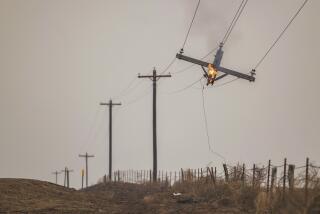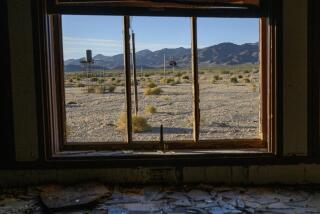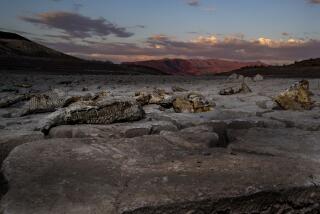Climate assessment delivers a grim overview
WASHINGTON — The impacts of climate change driven by human activity are spreading through the United States faster than had been predicted, increasingly threatening infrastructure, water supplies, crops and shorelines, according to a federal advisory committee.
The draft Third National Climate Assessment, issued every four years, delivers a bracing picture of environmental changes and natural disasters that mounting scientific evidence indicates is fostered by climate change: heavier rains in the Northeast, Midwest and Plains that have overwhelmed storm drains and led to flooding and erosion; sea level rise that has battered coastal communities; drought that has turned much of the West into a tinderbox.
“Climate change, once considered an issue for a distant future, has moved firmly into the present,” the report says. “Americans are noticing changes all around them. Summers are longer and hotter, and periods of extreme heat last longer than any living American has ever experienced. Winters are generally shorter and warmer.”
Written by 240 scientists, business leaders and other experts, the draft assessment arrives days after the National Oceanic and Atmospheric Administration issued its annual State of the Climate Report, which noted that 2012 was the hottest year on record. Together, the two major reports and a year of drought, wildfires, floods and freak storms have created for President Obama the chance to take substantial steps on climate change, environmentalists said.
The report explicitly addresses the most controversial question in the global warming issue, saying that consumption of fossil fuels by humans is the main driver of climate change.
“The findings in the report are a three-alarm fire,” said Rep. Henry A. Waxman (D-Beverly Hills). “Climate change is already causing widespread disruption across the nation. We are in deep trouble if we don’t act forcefully this year.”
But with the White House working on so many economic, foreign and domestic policy fronts, it remains unclear if the president will speak up more on climate, let alone spearhead new initiatives.
The Obama administration has implemented several regulations to curtail emissions of carbon dioxide and other greenhouse gases that scientists say have stoked global warming. But the president seldom speaks of climate change.
The White House declined to comment on the National Climate Assessment report, saying it had not had a chance to review it.
The report, issued by an independent, interagency group operating under the president’s National Science and Technology Council, first came out in 2000 but went on hiatus during the Bush administration. It does not offer policy proposals to reduce greenhouse gas emissions or to help specific communities adapt to climate change. Instead, it details the risks they face.
The Southwest, including California, produces more than half of the country’s “high-value specialty” crops that are heavily dependent on irrigation. But a projected decline in snowpack and stream flow and increased competition for the water could threaten California’s agricultural communities. Higher temperatures could disrupt regional electricity grids and create public health emergencies in Southwestern cities, where 90% of the region’s population lives.
Flooding and sea level rise are already damaging some coastal California communities during storms and high tides, the assessment says, and water would come farther inland as erosion worsens.
The final assessment will be issued in early 2014. Public comment on the draft will be accepted until April 12.
More to Read
Sign up for Essential California
The most important California stories and recommendations in your inbox every morning.
You may occasionally receive promotional content from the Los Angeles Times.











